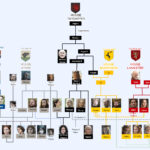The Danish monarchy, one of the oldest in the world, boasts a fascinating lineage of rulers. Since 1513, a distinctive naming tradition has been observed, with male monarchs predominantly named Christian or Frederik. This alternating pattern, where a Christian often names his heir Frederik and vice versa, has created a recognizable rhythm in the royal succession.
Among the notable figures in Danish royal history, Christian IV (1588-1648) stands out as a visionary king. His reign was marked by significant innovation and architectural projects that continue to shape Copenhagen’s landscape today. Another prominent, though more tragic, monarch is Christian VII (1766-1808). His struggles with mental health became widely known, and his story inspired the acclaimed film A Royal Affair (2012), bringing Danish royal history to an international audience.
King Christian X (1912-1947), grandfather to the current queen, remains a symbol of national pride. During the difficult years of Nazi occupation in World War II, his dignified and courageous demeanor resonated deeply with the Danish people. His daily rides on horseback through Copenhagen, without guards, were seen as a powerful act of defiance. Furthermore, his efforts are credited with contributing to the protection of Danish Jews from Nazi persecution, solidifying his place as a national hero.
HM Queen Margrethe II (1940-), the reigning monarch, made history as the first female ruler since Queen Margrethe I (reigned 1376-1412). Looking to the future, the Danish royal family has embraced gender equality in succession. A 2009 referendum established that the eldest child of the monarch, regardless of gender, will be next in line to the throne. This progressive change ensures a more equitable future for the Danish monarchy.
Queen Margrethe II’s intellectual curiosity and broad education are well-documented. She pursued studies in Philosophy, Archaeology, and Political Science at prestigious institutions across Europe, including the University of Cambridge, the Sorbonne in Paris, and the London School of Economics. Beyond academia, she has a strong connection to the Danish Defense, having undergone extensive training in the Women’s Air Force. Adding to her multifaceted persona, Queen Margrethe II is also celebrated for her artistic talents, with public exhibitions of her watercolors and textiles, and contributions to theatrical scenography in Denmark.

